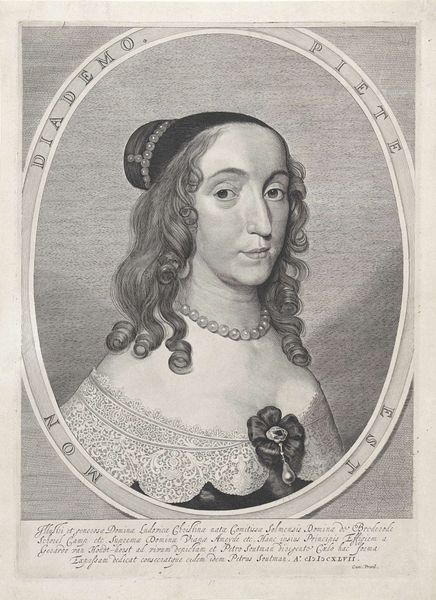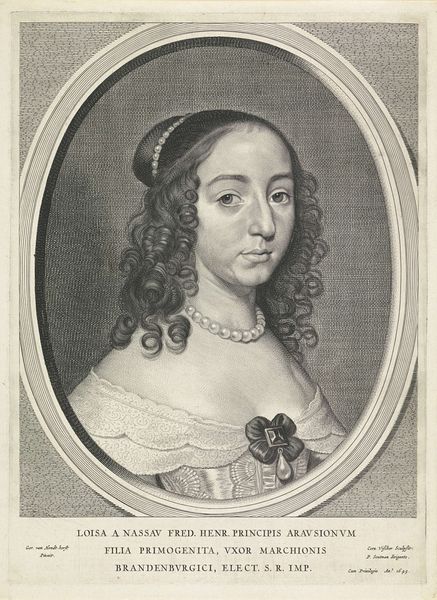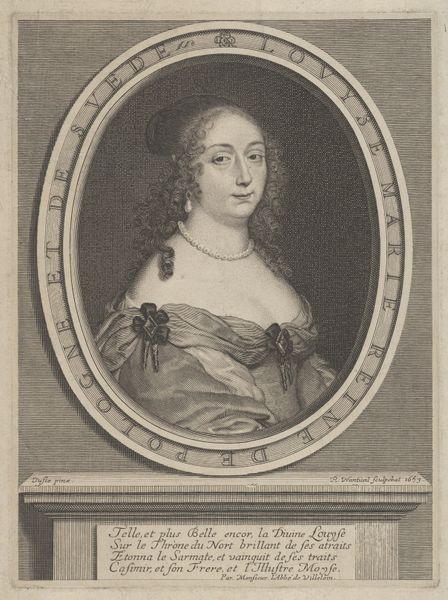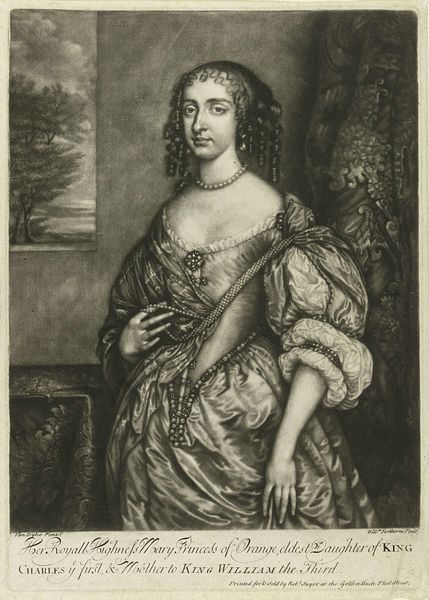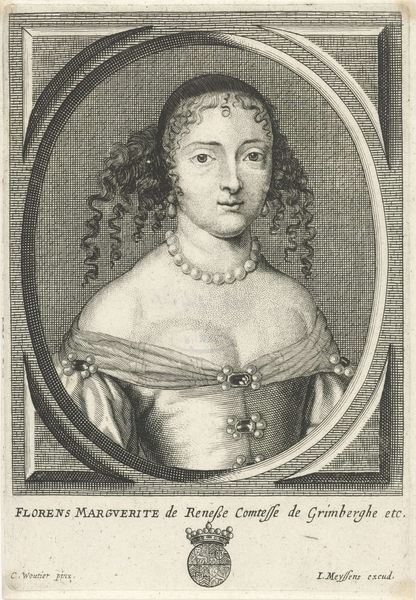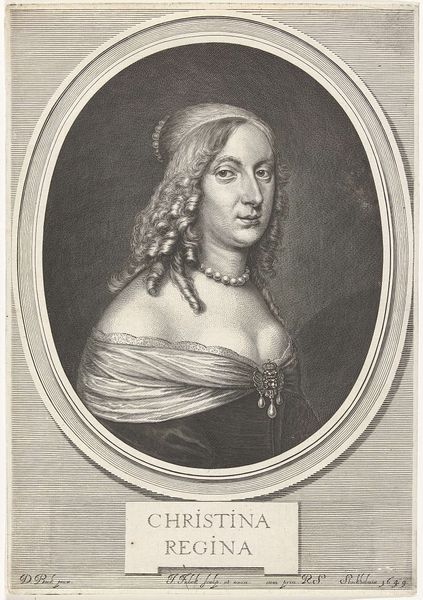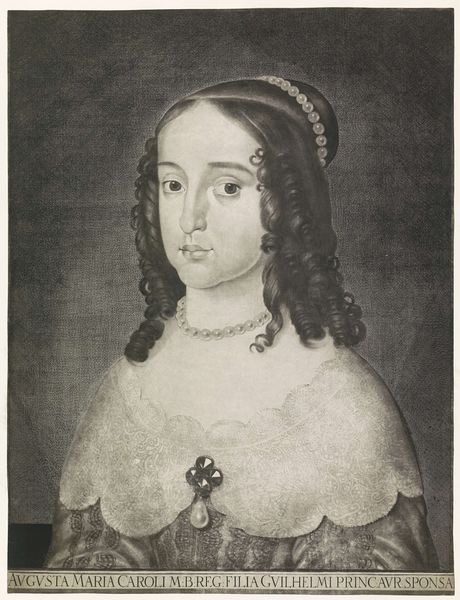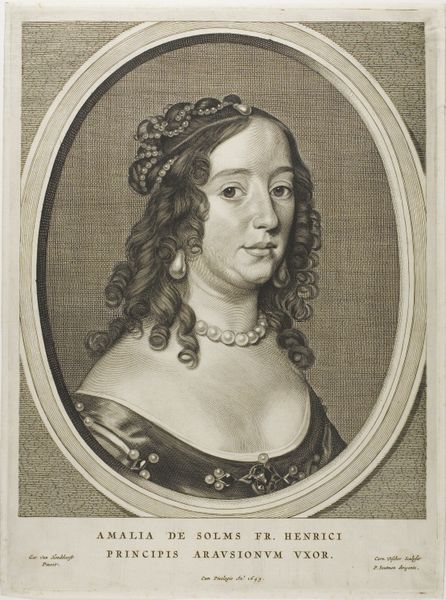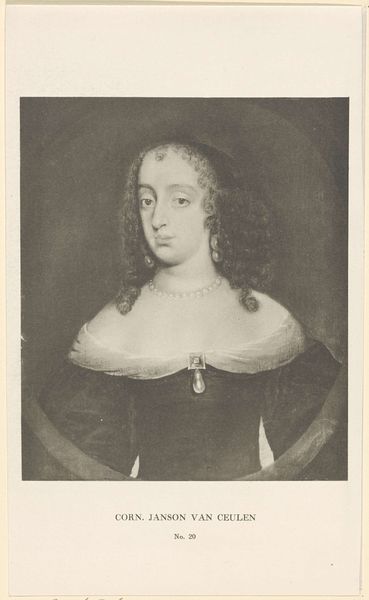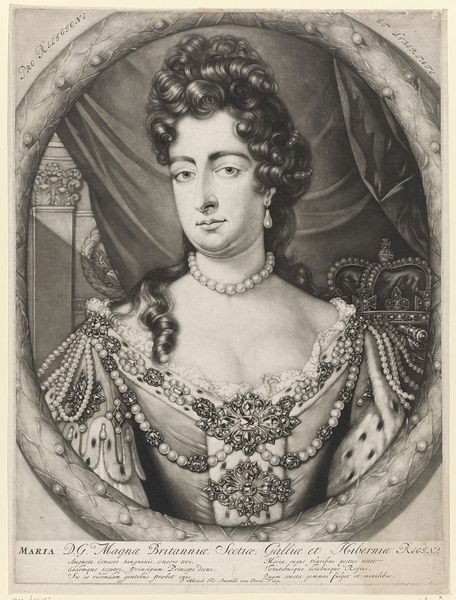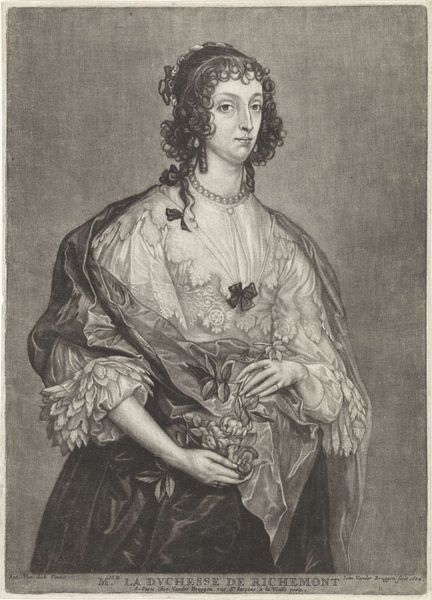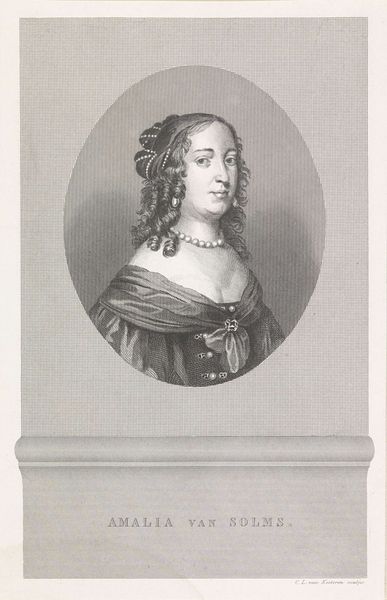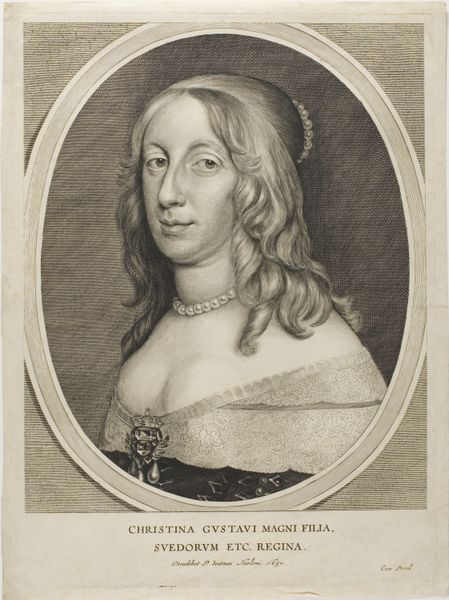
drawing, graphite
#
portrait
#
drawing
#
baroque
#
graphite
#
portrait drawing
#
history-painting
Dimensions: height 521 mm, width 414 mm
Copyright: Rijks Museum: Open Domain
Curator: Looking at this artwork, I’m struck by the delicacy and the weight of history pressing down, simultaneously. The gaze feels burdened, and the materials somehow soften the impact. Editor: Indeed. We are viewing a graphite drawing, "Portret van Elisabeth Stuart" completed around 1643 by Ludwig von Siegen. Consider the circumstances in which this portrait was created; the 1640s marked a tumultuous period of upheaval in England, heavily influencing how people like Stuart and von Siegen operated and, by extension, were remembered through artistic depictions such as this one. Curator: Absolutely, her regality—the crown, the pearl necklace—these read as familiar symbols of wealth, status, and belonging. But beneath that surface lies a certain unease. Do you think the pearl tears echo any wider sorrow? Editor: Certainly. The pearls, traditionally linked with purity and status, appear less celebratory here. Placed against the backdrop of political turmoil, they might embody anxieties related to the queen’s authority and legacy amid challenges to absolute monarchy. One could suggest that von Siegen masterfully uses these visual cues to convey her inner conflicts and her aspirations during those uncertain times. Curator: Thinking about it, even her adornments could imply her connection to history. Editor: Yes. This work highlights Stuart as a symbol – how portraits were mobilized for various ideological agendas during the Baroque period and onward. Note, too, that portraits commissioned of monarchs and the nobility during the period often served more than aesthetic roles. By creating imagery centered around these highly visible social leaders, their likenesses become political props for their parties, supporters, and/or broader movements. Curator: So you're saying her clothing wasn’t about merely displaying richness; it acted more like public speech during these periods. Editor: Precisely! And in considering how portraits helped influence Stuart's contemporary legacy and the understanding we currently possess about Stuart's image, the symbolic impact cannot be understated! Curator: This exploration has enriched our understanding greatly. It emphasizes the complex intersections between history, art, and identity. Editor: Absolutely. Now our audience can further ponder how power is displayed. It’s interesting how an artwork on paper invites complex discussion.
Comments
No comments
Be the first to comment and join the conversation on the ultimate creative platform.
